Fix: Error Connecting to Divinity Original Sin 2 Connection Attempt Failed
the larian support tool will be disabled
Some Windows users are reporting getting the ‘Connection Attempt Failed‘ error while attempting to connect to Larian servers in order to play Divinity Original Sin. Some users are experiencing this issue while trying to launch the game while others are reporting that the issue only occurs when they attempt to connect to other people in order to play cooperatively. This issue is reported to occur with both Steam and Gog.com.
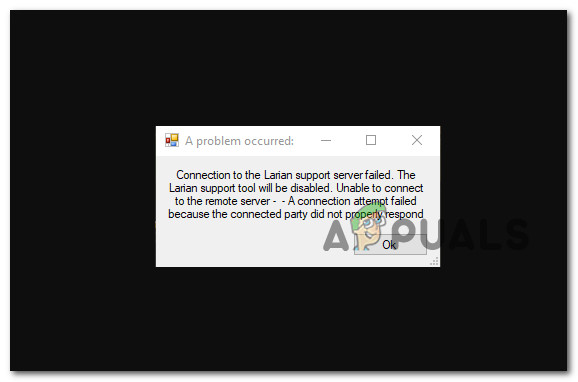
After investigating this particular issue thoroughly, it turns out that there are several different scenarios that might be triggering this error code. Here’s a list of potential culprits:
- Game Version Mismatch – As it turns out, you can expect to see this error code if you’re trying to play a co-op game with a buddy that has a different version of Divinity Original Sin 2 than you. In this case, you can resolve the issue by ensuring both of you are running the same game’s version.
- Corrupted Windows 10 profile – According to some affected users, you can expect to see this error pop-up appearing if you’re trying to open the game while signed in with a corrupted Windows 10 profile. In this case, you can resolve the problem by creating & using a new Windows 10 profile while opening the game.
- The game executable is blocked – A firewall can actively block the main executable of the game due to a false positive and cause this issue. In these cases, a quick way to avoid the roadblock is to launch the game via the EoCApp executable in order to bypass the error entirely.
- Corrupted game installation files – As it turns out, this particular issue can also be caused by some type of corruption that is affecting the game installation. In this case, you can replace the corrupted instances with healthy equivalents by running an integrity check (on Steam or GOG.com Galaxy).
- Divinity: Original Sin Blocked Ports – Under certain circumstances, you can see this error popping up because some ports that the game needs to access in order to facilitate cooperative gameplay are not opened. In this case, you can resolve the issue by enabling UPnP or open the necessary ports manually.
Now that you are intimately familiar with every potential culprit that might be responsible for the apparition of this issue, here’s a list of verified methods that other affected users have used to resolve the ‘Connection Attempt Failed’ with Divinity Original Sin:
Method 1: Make sure you have the same version as your co-op buddy (if applicable)
According to a lot of affected users, this issue is often reported to occur in those instances where you and your co-op buddy that you’re attempting to cooperatively with are running different versions of Divinity Original Sin 2.
If the game was just patched, chances are either one of you is running on the older version which is determining the game server to refuse the connection due to a build version incompatibility.
To resolve this issue, you’ll need to force your launcher (Steam or Gog.com) to update Divinity Original Sin 2 to update to the latest build. Obviously, you need to talk your friend into doing the same.
Depending on the launcher that you’re using, follow one of the sub-guides below to make sure that Divinity Original Sin 2 is updated to the latest version available.
A. Update game on Steam
- Open your Steam client and insert your user credentials if asked to insert them.
- Once you are signed in with your account, access the Library tab and right-click on Divinity Original Sin 2 from the menu on the left.
- From the context menu that just appeared, click on Properties.
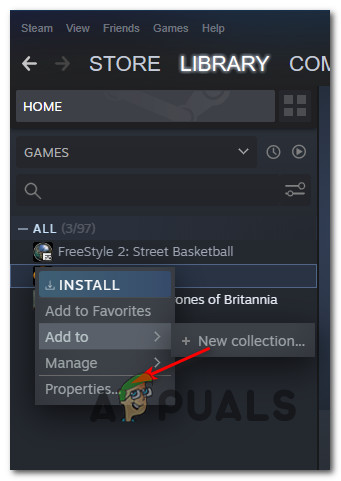
Accessing the Properties screen - Once you’re inside the Properties screen, click on Updates from the menu on the left, then ensure that the drop-down menu associated with Automatic Updates is set to Always keep this game updated.
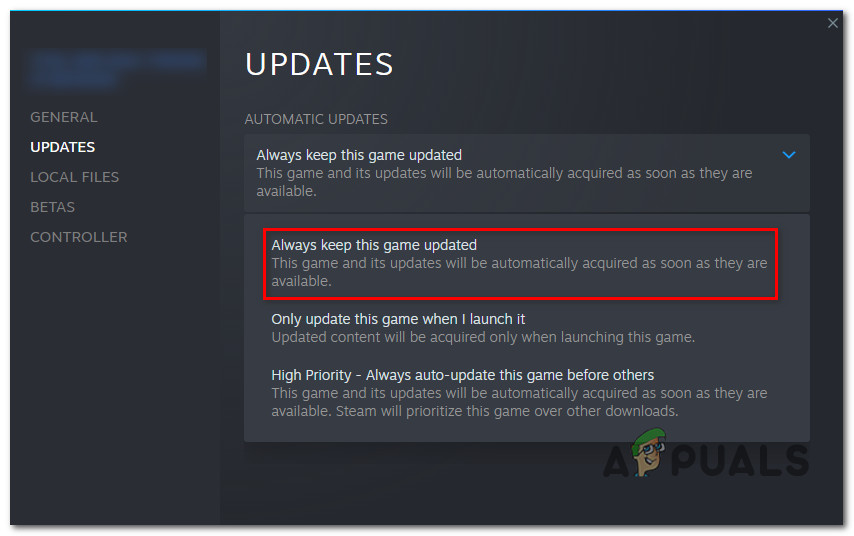
Ensuring that the game is updated - If a new update is available, Steam will begin downloading it in the background.
Note: While you wait for the new version to be downloaded, talk with your co-op buddy to do the same steps on his computer.
B. Update the Game on GoG.com
- Open Gog.com Galaxy and sign in with your account.
- Once you are successfully signed in, click on Owned games from the menu on the left.
- Next, right-click on your game’s icon from the central tab and click on Check for Updates from the context menu.

Checking for Updates - Wait until the game is fully updated and advise your co-op buddy to do the same before launching Divinity Original Sin 2 once again and seeing if the problem is now fixed.
If you already ensured that you’re launching the latest version of Divinity Original Sin 2 and you’re still encountering the same kind of issue, move down to the next potential fix below.
Method 2: Changing the Windows 10 Profile
As weird as this particular fix might seem, there are a lot of Windows 10 users who reported that they managed to resolve the ‘Connection Attempt Failed’ error and connect to online sessions with no issues after they’ve created a new Windows profile and launched the game while it was active.
If you’re on Windows 10 and you suspect that you might be dealing with a corrupted profile, follow the instructions below to learn how to create a new user profile on your Windows 10 computer:
- Start by press Windows key + R to open up a Run dialog box. Next, type “ms-settings:otherusers” inside the text box and press Enter to open up the Family & other people tab of the Settings app.
- Once you’re inside the Family & other users tab, move down to the right-hand pane and go to the Other users tab. Next, click on Add someone else to this PC.
- Then, proceed by adding your email and phone associated with your Microsoft account. If you want to establish a local account, click on “I don’t have this person’s sign-in information‘.
- At the next screen, type the credentials of your Microsoft account or click on Add a user without a Microsoft account (if you want to create a local account).
Note: Know that if you create a local account, some online features present on Windows 10 will not be available. - Next, proceed by establishing a User name and a password for your new account. Next, you’ll be prompted to assign a security question. We encourage you to do it in order to secure your account and set up a password recovery method.
- After the new account has been created, restart your computer and log in with the newly created account at the next startup.
- Finally, see if the search function is working normally now. If it is, you can safely delete the old user profile since you won’t use it anymore.
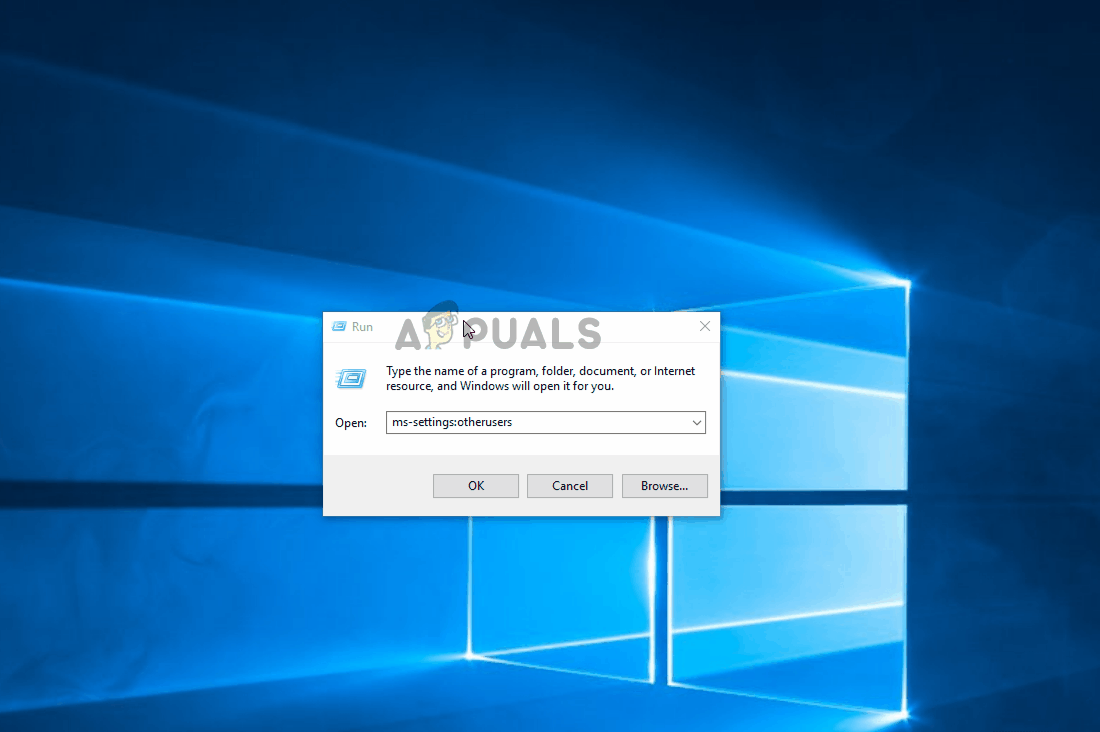
If you’re still having the same issue with Divinity: Original Sin 2, move down to the next potential fix below.
Method 3: Launch the game from the EoCApp.exe (Steam Only)
If you’re encountering this issue on Windows 10 while launching Divinity Original Sin 2 via Steam, you might be able to avoid the apparition of the ‘Connection Attempt Failed‘ error by launching the game via the EoCApp executable instead of using the default game’s shortcut.
Several affected users have confirmed that this operation finally allowed them to play the game cooperatively.
If this scenario is applicable and you’re launching the game through Steam, follow the instructions below to create a shortcut for the EoCApp.exe and launch the game through there to avoid the apparition of this issue entirely:
- Open File Explorer and navigate to the location where you installed Divinity: Original Sin 2. If you didn’t install the game in a custom location, you will find the game installation in the following location:
Program Files (x86)\SteamLibrary\SteamApps\common\Divinity Original Sin 2\bin\
- Once you arrive at the correct location, right-click on the EoCApp.exe and choose to Send to Desktop from the context menu that just appeared.
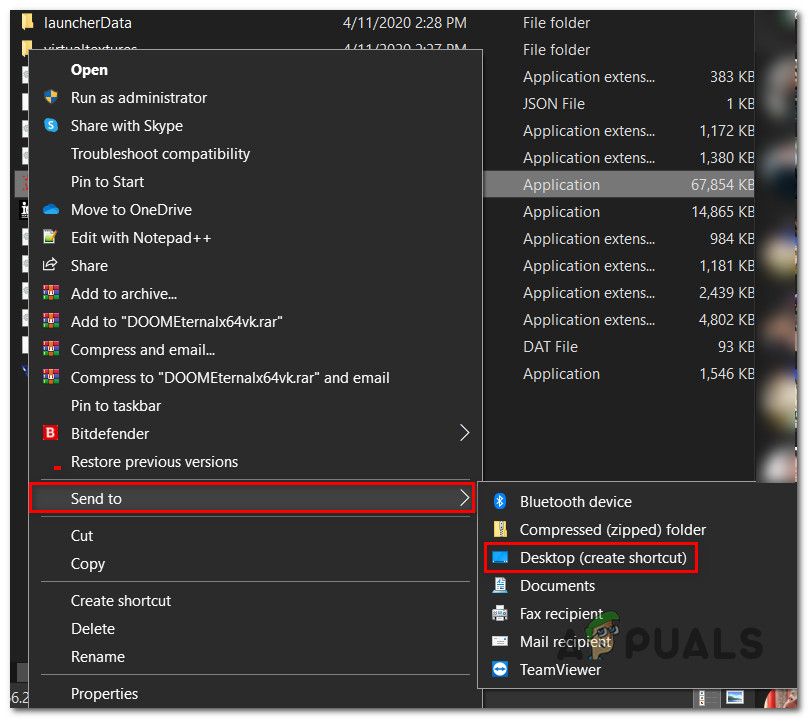
Sending the icon to the desktop - Once the shortcut has been successfully created and sent to your desktop, double-click on the shortcut of EoCApp.exe on your desktop and see if it’s working.
If the problem is still not resolved, move down to the next potential fix below.
Method 4: Checking the Integrity of Game’s files (Steam and GOG.com)
If none of the methods above have proven to be effective in resolving the ‘Connection Attempt Failed‘ error in your case, you should start to consider that the issue might be related to some type of file corruption that is affecting the game installation.
In case you think this scenario might be applicable, you can resolve the issue by performing a file integrity check and repair on your Steam or GOG installation. Several affected users have reported that the error was fixed after they ran an integrity check on Steam or a Repair on Gog.com Galaxy.
Depending on the launcher you use to launch Divinity: Original Sin 2, follow one of the sub-guides below to check the integrity of the game’s files on Steam or Gog.com Galaxy and resolve the ‘Connection Attempt Failed‘ error:
A. Verifying the Game in Steam
- Launch your Steam client, then sign with your Steam account credentials.
- Once you have successfully signed in with your Steam account, right-click on the listing associated with Divinity: Original Sin 2 from the Library tab, then click click on Properties from the newly appeared context menu.
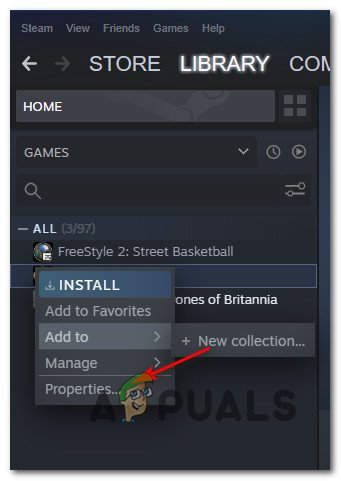
Accessing the properties screen of Divinity: Original Sin - Inside the Properties screen of the affected games, go ahead and click on Local Files, then click on Verify Integrity of Game Cache.

Verifying the integrity of the game files - Confirm the integrity check, then wait until the operation is complete before restarting your computer and launching the game once again to see if the problem is now fixed.
B. Verifying the Game in Gog.com
- Open GOG.Com Galaxy and sign in with your account credentials.
- Once you are signed in successfully, click on Owned games from the vertical menu on the left.
- Next, right-click on the entry associated with Divinity Original Sin 2, then choose Manage Installation > Repair game from the context menus that just appeared.
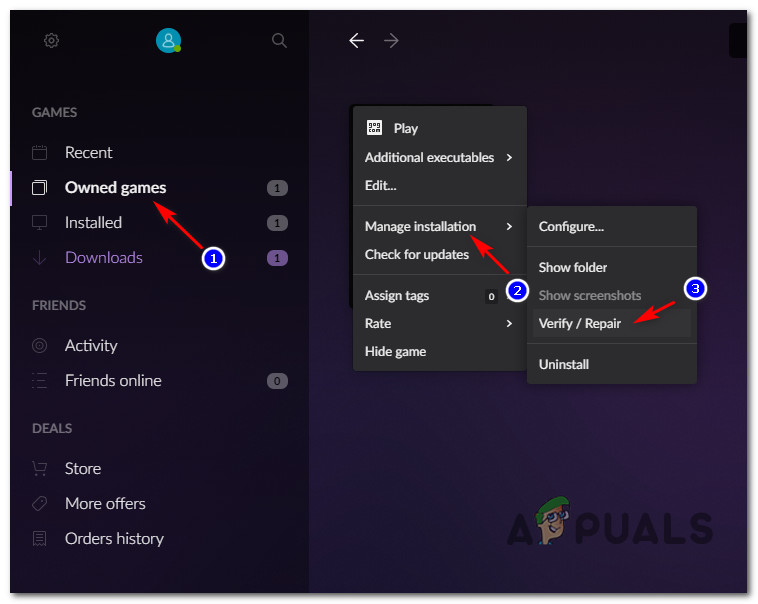
Verifying the game inside Gog.com - Once the operation is complete, restart GOG.com Galaxy and see if the issue is fixed by launching the game once again.
If you’re still encountering the same ‘Connection Attempt Failed‘ error even after running integrity checks on Steam or GOG.com, move down to the next potential fix below.
Method 5: Open Divinity: Original Sin 2’s Ports
If none of the methods above have been effective in your case, you should consider that this particular issue might be related to a game port that is not opened on the network that you’re currently connected to.
If this scenario is applicable, you can ensure that the ports used by Divinity: Original Sin 2 are all opened by enabling UPnP (Universal Plug and Play) if your router supports it or by forwarding the used ports manually if you’re using an older router.
Note: Regardless of the method that you’ll end up going for, it needs to be done on both your PC and your friends’ PC if you’re playing cooperatively.
A. Enabling UPnP
Keep in mind that nowadays, the vast majority of routers are automatically capable of forwarding the ports used by the game you’re actively playing with a feature called UPnP (Universal Plug and Play).
So unless you modified the settings on your router, this UPnP feature should be enabled by default. However, if you made some changes yourself, here are some instructions on enabling UPnP in your router settings.
In case UPnP is not supported by your router, follow the instructions below to forward the ports manually.
B. Forwarding the game’s ports manually
- Start by opening your default browser and type one of the following addresses and press Enter to open your router settings:
192.168.0.1 192.168.1.1
- Once you’re at the initial login screen, enter the login credentials to access your router settings.
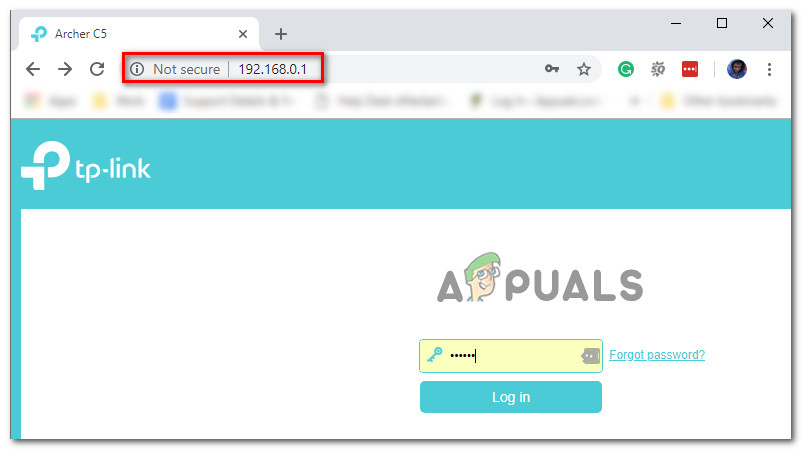
Accessing the Router settings Note: Keep in mind that in most cases, you’ll be able to get in with the default login credentials – admin as username and 1234 as password. If these generic credentials don’t work, search online for the default login credentials of your router model.
- After you have successfully arrived inside your router settings, expand the Advanced / Expert menu, and look for an option named Port Forwarding / NAT Forwarding.
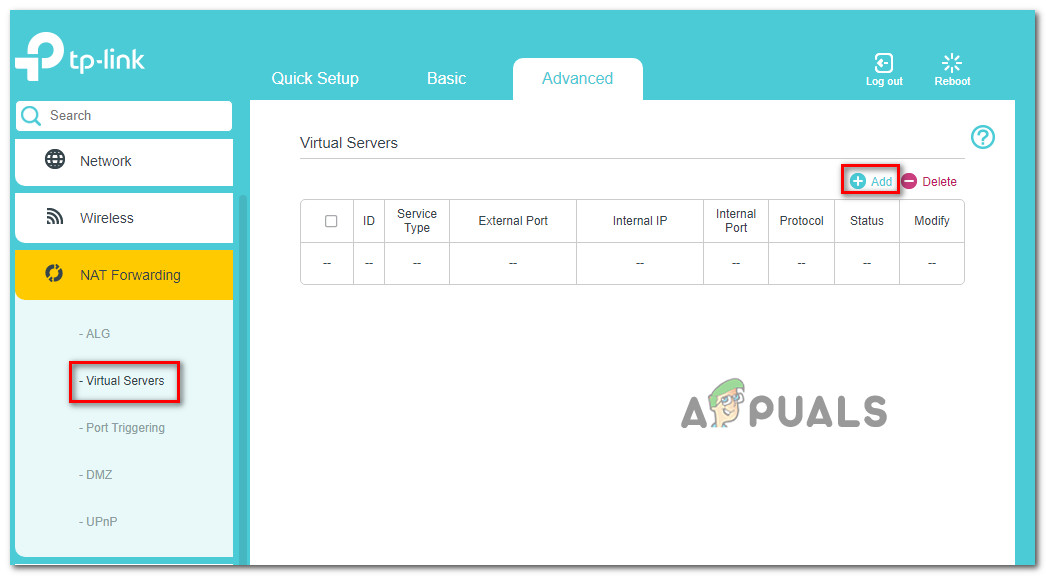
Forwarding the necessary ports - Next, go ahead and manually open the ports below to ensure that your network will accept incoming connections from the Divinity: Original Sin 2:
23243 - 23252 23253 - 23262
- Once every port is successfully forwarded, restart your computer, launch the game once again and see if the problem is now fixed.





